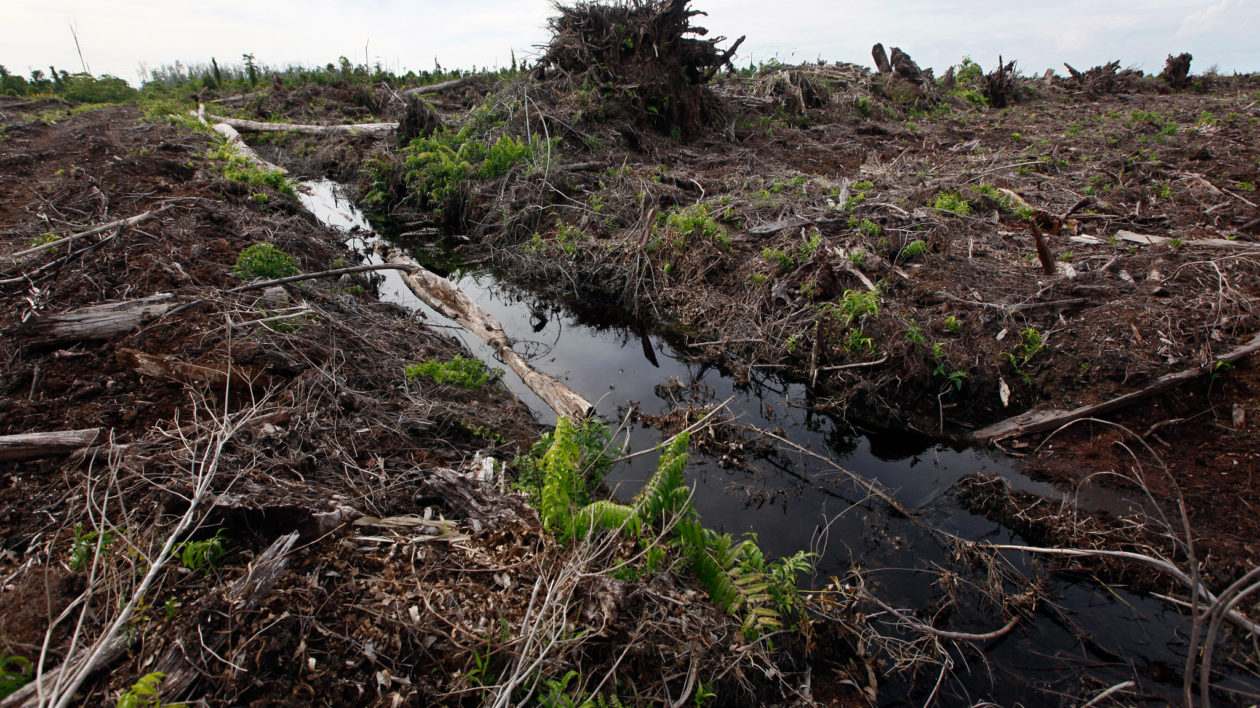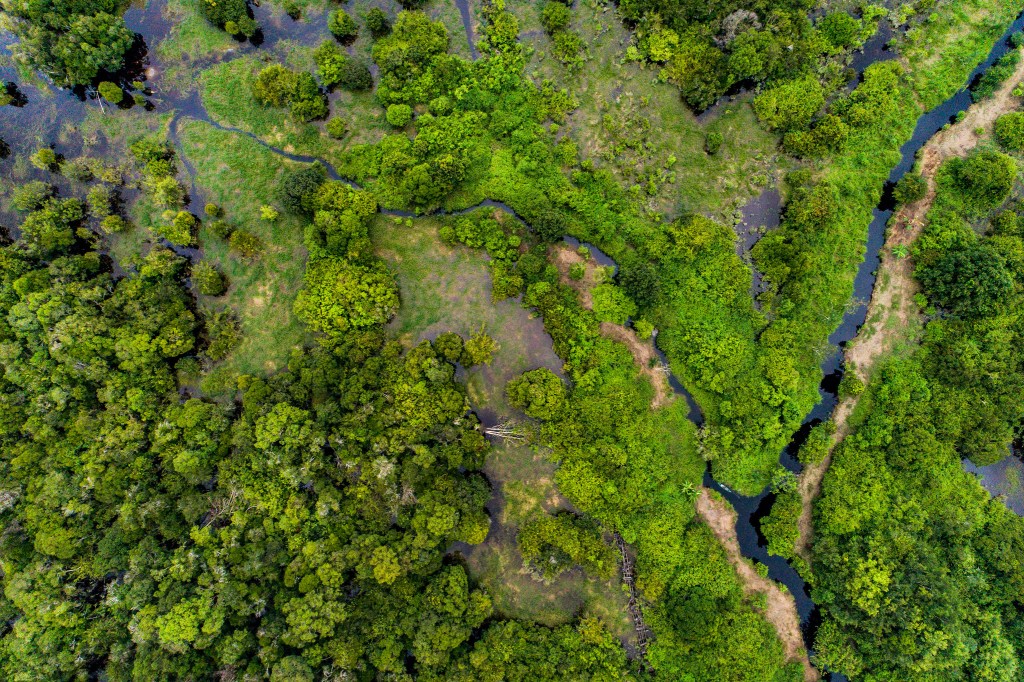Peatlands are one of nature’s best carbon sinks, and yet the ecosystem is under threat from conversion to agriculture. New research from Indonesia calculates the carbon cost of converting peat swamps to oil palm plantations: 640 metric tons of CO2 per hectare.
The Gist
The researchers compared carbon stocks of intact peat swamp forests, secondary forests, and oil palm plantations in Central Kalimantan, Indonesia. Their results show that converting primary peat swamp forest to oil palm plantation releases an estimated 640 tons of CO2 per hectare.
“Indonesia lost about 1.5 million hectares of peat swamp forests in the last 10 years, which means that every year peatland conversion releases 96 million tons of CO2 into the atmosphere from above-ground vegetation loss alone,” explains Nisa Novita, lead author on the research and a forest carbon and climate scientist for Yayasan Konservasi Alam Nusantara (YKAN). “That’s equivalent to the per-capita emissions of 11 million Indonesian people each year.”

The Big Picture
Peatlands are the unsung heroes of carbon storage. “Peatlands only cover 3 percent of the Earth’s land surface, but they store about one-third of the world’s soil carbon,” says Novita. “They also store two times more carbon than terrestrial forests.”
Despite their value as a prominent natural climate solution, 15 percent of global peatlands have been drained for agriculture. Once drained, both the vegetation and soil gradually release carbon into the atmosphere, a process that’s accelerated when people burn the land to clear vegetation.
Indonesia has the largest tracts of peatland ecosystems in Southeast Asia, comprising 18 percent of the world’s peatlands. “This ecosystem is rich in biodiversity and a home for threatened and endemic species, like orangutan and Sumatran tiger,” says Novita. Yet like the country’s vast rainforests, peatlands are falling victim to the oil palm boom.
Her research is the first to estimate the carbon emissions that result from converting peat ecosystems to oil palm plantations.
The Takeaway
In an effort to protect peat ecosystems, Indonesia has implemented a moratorium on the conversion of peatlands since 2011, as well as investing in peatland rewetting and restoration. Re-wetting peat soils stops the slow release of soil carbon, but it can take years to restore above-ground vegetation.
“Given the significant emissions, our results show that avoiding peat-swamp conversion is much more effective than rewetting,” says Novita. “If Indonesian’s peatlands are managed properly by avoiding emissions from deforestation and degradation, including peat fires, Indonesia will easily achieve its emissions reduction target from the forestry sector.”
Previous research identified avoided peatland deforestation and peat rewetting are the best strategies for Indonesia to achieve its emissions reduction targets. YKAN, the Nature Conservancy’s affiliate in Indonesia, is working with provincial governments and communities to protect peat swamp forests in East and North Kalimantan. Novita and her colleagues will guide those efforts with additional science to better estimate greenhouse gas emissions from peatlands.




Join the Discussion